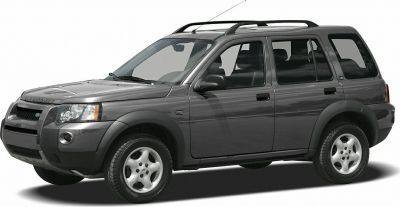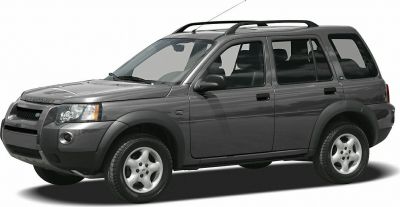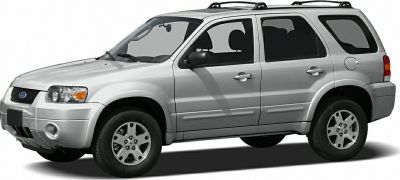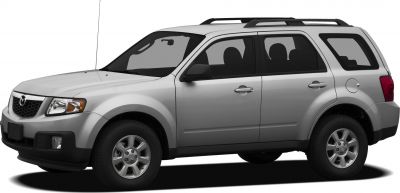 2000 Ford Maverick II Dimensions, Size & Specs
2000 Ford Maverick II Dimensions, Size & SpecsMeasurements of the 2000 Ford Maverick II, engineered for optimal performance and comfort
| Dimensions | |
|---|---|
| Length: | 4394-4441 mm173.0-174.8 in14.4-14.6 ft |
| Width: | 1781-1825 mm70.1-71.9 in5.8-6.0 ft |
| Height: | 1722-1762 mm67.8-69.4 in5.6-5.8 ft |
| Trunk Capacity: | 985 liter34.8 cu ft |
| Trunk Capacity (Max): | 1940 liter68.5 cu ft |
| Weight Specifications | |
| Curb Weight: | 1470-1665 kg3241-3671 lbs |
| Maximal permitted Weight: | 1940-2145 kg4277-4729 lbs |
| Tire Specifications | |
| Rims Size: |
|
| Tire Sizes: |
|
The Ford Maverick II, produced between 2000 and 2007, is a mid-size SUV designed to offer a balanced combination of comfort, utility, and moderate dimensions well-suited for family and off-road use. This generation of the Maverick ranges from 4394 mm to 4441 mm (173 to 175 inches) in length, providing ample cabin and cargo space without the bulk of larger SUVs. Its width varies between 1781 mm and 1825 mm (70.1 to 71.9 inches), allowing for a stable stance on the road while maintaining maneuverability in urban environments. Height spans from 1722 mm to 1762 mm (67.8 to 69.4 inches), delivering sufficient headroom and a commanding driver position typical of SUVs from this era. Weighing between 1470 kg and 1665 kg (3241 to 3671 lbs) curb weight, the Maverick II strikes a practical balance between ruggedness and fuel efficiency, with a maximum weight capacity of 1940 to 2145 kg (4277 to 4729 lbs), enabling it to handle passengers, cargo, and towing needs effectively. One standout feature of the Maverick II is its considerable luggage capacity, offering 985 liters (34.8 cubic feet) of space behind the rear seats, which expands to a generous 1940 liters (68.5 cubic feet) when the rear seats are folded down. This versatility makes it ideal for both daily commuting and longer road trips requiring extra storage. The vehicle rolls on 16-inch rims and supports a variety of tire sizes including 225/70 R15S, 225/70 R15, 225/75 R16, and 235/70 R15, providing options for different driving conditions and preferences. Overall, the Ford Maverick II (2000-2007) remains a practical and reliable SUV option with dimensions and features that cater well to drivers seeking a mid-size SUV with solid cargo capacity and adaptable usage.
Discover the standout features that make the 2000 Ford Maverick II a leader in its class
Have a question? Please check our knowledgebase first.
The Ford Maverick II produced from 2000 to 2007 has length measurements ranging between 4394 mm and 4441 mm (approximately 173 to 175 inches). Its width varies from 1781 mm to 1825 mm (roughly 70.1 to 71.9 inches), and its height spans from 1722 mm to 1762 mm (about 67.8 to 69.4 inches). These dimensions indicate a compact to mid-size SUV footprint, designed for versatile urban and off-road use, providing a balanced presence on the road while offering ample interior room.
The Ford Maverick II has a curb weight ranging from 1470 kg to 1665 kg (approximately 3240 to 3670 pounds). This weight represents the vehicle's readiness to drive with all standard equipment, fluids, and a full tank of fuel excluding passengers and cargo. The maximum weight capacity, which includes the vehicle, passengers, cargo, and any trailer tongue weight if applicable, ranges between 1940 kg and 2145 kg (around 4277 to 4730 pounds). This capacity ensures the Maverick II can safely carry adequate loads for various uses without compromising safety or performance.
The Ford Maverick II features a luggage capacity of 985 liters (about 34.8 cubic feet) with the rear seats up, which is fairly generous for its SUV class and ideal for everyday grocery runs or luggage for smaller groups. When the rear seats are folded down, the space nearly doubles, expanding to 1940 liters (approximately 68.5 cubic feet). This significant increase enables the vehicle to accommodate larger cargo items such as sports equipment, furniture, or bulk shopping, making it highly versatile for families or outdoor enthusiasts.
A standard single-car garage typically measures about 2.4 to 2.7 meters wide (7.9 to 8.9 feet) and 5.4 to 6 meters long (17.7 to 19.7 feet). The Ford Maverick II’s maximum width ranges up to 1.825 meters (71.9 inches) and length up to 4.441 meters (175 inches). Given these dimensions, the Maverick II will comfortably fit within the average garage width and length with plenty of room for maneuvering around the vehicle and opening doors. Its height, peaking at around 1.762 meters (69.4 inches), also fits well under standard garage ceiling clearance, making it a practical choice for homeowners with typical residential garages.
Compared to the original Ford Maverick model, the Maverick II (2000–2007) saw a modest increase in dimensions, reflecting evolving consumer preferences toward more spacious SUVs. The length and width dimensions grew slightly, enhancing interior passenger comfort and cargo capacity. Additionally, the new generation benefited from improved design with a taller height, contributing to a better driving position and increased headroom. These dimensional changes resulted in a more commanding road presence and practical utility while maintaining maneuverability akin to the earlier model.
The Ford Maverick II comes equipped with primarily 16-inch rims, paired with tire sizes such as 225/70 R15S, 225/70 R15, 225/75 R16, and 235/70 R15. These tire sizes offer a good balance between ride comfort, grip, and off-road capability. The relatively tall sidewalls (indicated by the 70 and 75 aspect ratios) help absorb road irregularities and improve traction on rough terrains, which complements the SUV’s versatile nature. The rim and tire setup also aids in providing adequate ground clearance and stability, essential for both city driving and off-road excursions.
With a width ranging from 1781 mm to 1825 mm (70.1 to 71.9 inches), the Ford Maverick II strikes a balance between a stable, confident road presence and the ability to maneuver confidently in urban and off-road settings. A wider stance enhances stability during cornering and highway driving, reducing body roll, which is crucial for an SUV. Despite the width, the Maverick II remains narrow enough to navigate through tighter city streets and parking spaces, ensuring it is an agile and practical vehicle for a variety of driving environments.
The Ford Maverick II ranges in height from approximately 1722 mm to 1762 mm (67.8 to 69.4 inches). This elevated height provides a commanding driving position, improving road visibility for the driver—a key advantage in traffic and off-road conditions. For passengers, the increased height offers generous headroom, making the cabin feel spacious and less confined. Additionally, the higher ride height improves ground clearance, an essential feature for an SUV designed to tackle uneven terrain or adverse weather conditions safely and comfortably.
When compared to similar SUVs from the early 2000s, such as the Honda CR-V or Toyota RAV4, the Ford Maverick II positions itself with slightly larger dimensions and a competitive curb weight. Its length and width are comparable but the Maverick II offers a taller ride height, enhancing off-road capability and cabin space. The luggage capacity, especially with rear seats folded, surpasses many competitors, making it more versatile for carrying cargo. Furthermore, the Maverick II's tire options and rim sizes are geared toward durability and comfort, matching the expectations of SUVs designed for mixed urban and rugged use during that period.
The Ford Maverick II's curb weight ranges from 1470 kg to 1665 kg (3240 to 3670 pounds), which is typical for compact to mid-size SUVs of its time. This weight contributes to vehicle stability, benefit handling on highways, and improves traction in adverse weather. However, a heavier vehicle can have modest effects on fuel consumption, generally meaning slightly lower fuel efficiency compared to lighter cars. The Maverick II strikes a balance by providing solid structural integrity and occupant safety without excessive weight, ensuring it remains competitive in ride comfort and driving dynamics across various conditions.
Discover similar sized cars.

| Production: | 1998-2006 |
|---|---|
| Model Year: | 1998 |
| Length: | 4368-4445 mm172.0-175.0 in |
| Width: | 1809 mm71.2 in |
| Height: | 1708-1760 mm67.2-69.3 in |

| Production: | 1998-2006 |
|---|---|
| Model Year: | 1998 |
| Length: | 4368-4433 mm172.0-174.5 in |
| Width: | 1809 mm71.2 in |
| Height: | 1708-1760 mm67.2-69.3 in |

| Production: | 2000-2007 |
|---|---|
| Model Year: | 2001 |
| Length: | 4394-4442 mm173.0-174.9 in |
| Width: | 1781 mm70.1 in |
| Height: | 1702-1775 mm67.0-69.9 in |

| Production: | 2000-2011 |
|---|---|
| Model Year: | 2001 |
| Length: | 4395 mm173.0 in |
| Width: | 1800-1825 mm70.9-71.9 in |
| Height: | 1710-1765 mm67.3-69.5 in |
